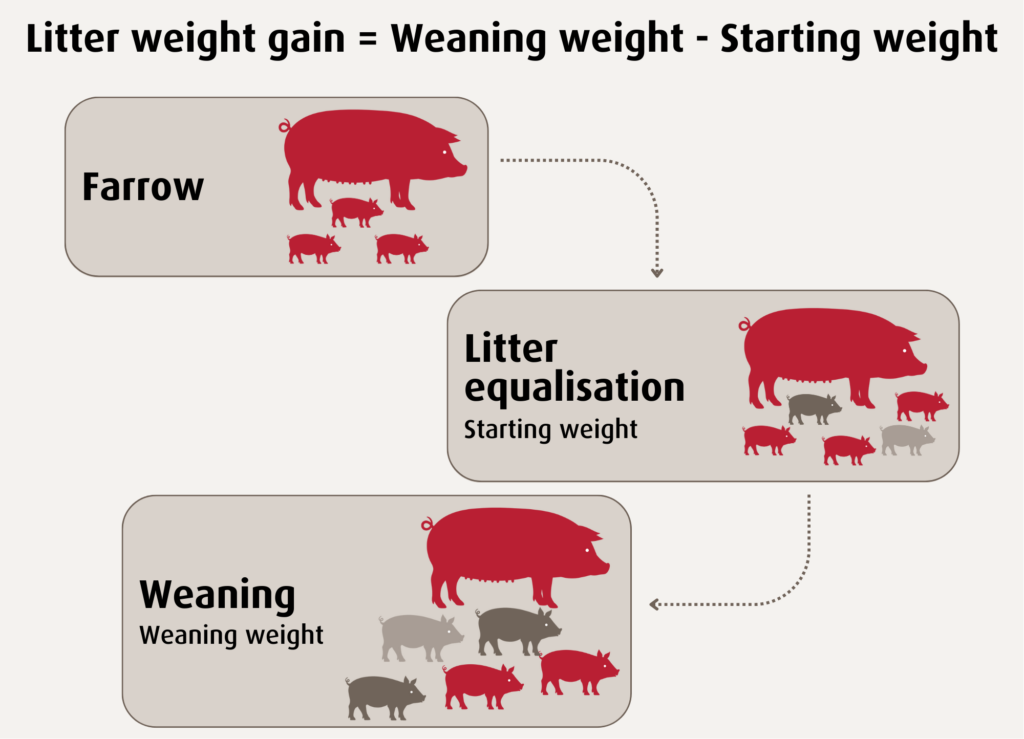In the future, it will be easier for the employees in your herd to handle the piglets. New research shows that breeding for litter weight gain increases the sows’ mothering abilities.
In the future, the sow has to be even better at caring for her piglets. This is the aim of new research carried out with DanBred genetics. A master’s thesis from Aarhus University has taken a closer look at how to breed for better maternal traits by looking at litter weight gain from litter equalisation until weaning. And it turns out litter weight gain has potential as a new trait in our breeding goal, and, thus, it can help reduce the number of nurse sows and work hours in the farrowing unit.
“I have studied how high the heritability for litter weight gain is in DanBred Landrace and DanBred Yorkshire. Litter weight gain says something about the sow’s maternal traits and ability to take care of her piglets, as it is a measure of how many kg of piglets she can get to weaning, as well as how large and robust the piglets are at weaning,” explains Line Busk Jensen, project manager at Breeding & Genetics in the Danish Agriculture & Food Council, and continues: “The higher the litter weight gain, the better the sow is at caring for the piglets and providing them with enough nutrition through her milk yield.”
Better survival
The results from the thesis also show that litter weight gain has a favourable genetic correlation with piglet survival, the maternal effect. This means that the sows with good genetic potential to ensure that their piglets survive also has the genetic potential to care for more piglets and deliver heavy and robust piglets at weaning. Data from the thesis showed that the highest litter weight gain was 93 kg at weaning. The average was 41-43 kg in purebred litters.
“The big difference between the average and the highest litter weight gain tells us a little about the potential for the trait, and, thus, the potential for the sows. However, if a piglet does not survive all the way to weaning, many kg will be lost in the total litter weight. In breeding, the goal will be to find the sows that are best at producing large litters at weaning – regardless of whether it is the sow’s own piglets that she looks after or someone she has received through litter equalisation,” says Line Busk Jensen.

Litter weight gain is routinely collected in DanBred breeding herds. After litter equalisation, the litter is weighed, and then again at weaning.
Litter weight gain has a moderate heritability of around 0.14-0.19 in DanBred Landrace and DanBred Yorkshire, meaning that some of the variation in the trait is due to genetics, while the rest is environment. In addition, the results showed a genetic correlation between litter weight gain and maternal effect for piglet survival of 0.41 and 0.51 for DanBred Landrace and DanBred Yorkshire, respectively.
Welfare and sustainability
It is not only saved the work hours and nurse sows that will be reflected on your bottom line. By breeding for higher litter weight gain, we will also achieve better welfare, a more sustainable production, and less virus spread in the farrowing unit as fewer pigs need to be moved around.
“We can reduce the number of feeding days in the other units, as the weaned pigs, from sows with good maternal traits, have a better growth. In addition, the pigs also have better health at weaning, as they will be heavier. It helps to improve the welfare in the stable,” says Line Busk Jensen.
We expect litter weight gain to be implemented as a new trait in our breeding goal during 2024. In the following years, you should see the effect of litter weight gain in your production. The new trait for piglet survival, which was introduced in the breeding goal last year, is also already indirectly influencing litter weight gain in a positive direction due to the favourable correlation between the traits.


